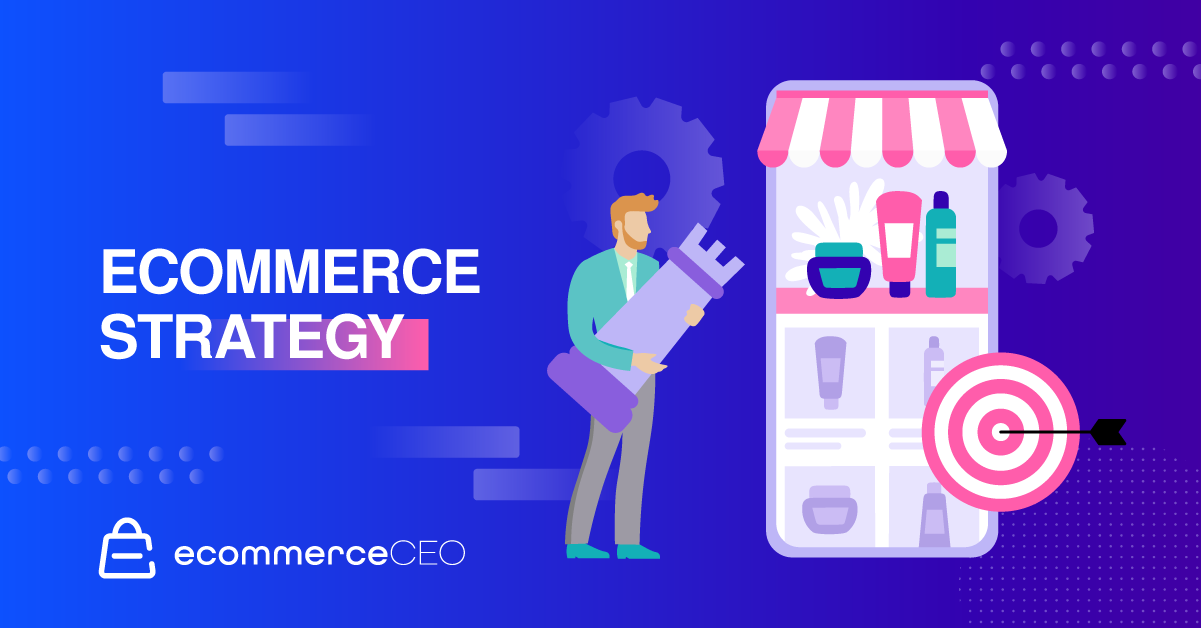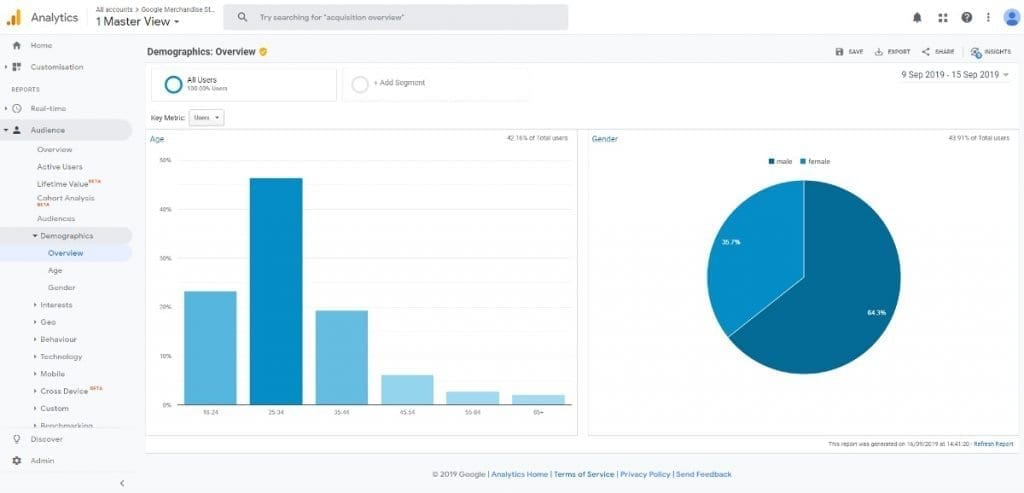An ecommerce strategy is a living, changing thing, just like your company. For an ecommerce store to succeed, it needs to serve its existing customers while attracting new potential customers and growing its audience.

Ecommerce companies come in all shapes and sizes, meaning no two strategies are exactly the same. However, there are some universal truths and best practices that can help with long-term ecommerce success.
In this article, we will cover what makes a strong ecommerce strategy. This includes expert advice as well as some marketing tips.
Understanding Ecommerce Strategies
When you step back and look at it, ecommerce strategy is a broad topic that is difficult to pin down. It can include everything from marketing, to PR, to daily business practices. While it would be impossible to exhaustively cover every aspect of ecommerce strategy in detail, we can break down the primary topics that compose a well-rounded ecommerce strategy.
Product Strategy
At the heart of ecommerce are the products being bought and sold online. Strategizing the best way to market, present, and deliver these products will make up a significant portion of your business operation. This includes everything from individual images on product pages to your overall niche and product categories.
Customer Relationships
Customers are the lifeblood of any ecommerce company. Building strong, lasting relationships will lead to more online sales and nurture brand advocates who will help your business grow through word of mouth. After product strategy, how you interact with your customers is the next most important aspect of your business.
Corporate Considerations
No matter how big or small your ecommerce store is, it is a business and needs to be treated as one. Whether you have one employee, 100, or 1,000, the day-to-day duties and procedures that keep your business running smoothly will ultimately decide your profitability and longevity. Once you have a working product and customer strategies in place, take a step back and look at your internal operation.
What You Should Consider Before Building an Ecommerce Strategy
Ecommerce strategies are complex and fluid. They will change and grow along with your brand, but there are some universal concepts that you should think about before getting started. Once you internalize the answers to these topics, you will have a strong foundation for building your digital strategy.
Your Personal Values

A mission statement embodies your company’s values, purpose, and promises. Creating one will help guide your future business decisions and can be a useful PR tool. Consumers are more likely to shop with brands they trust, even if that means spending more.
Long-Term Goals and Visions
An ecommerce strategy requires planning and persistence. If you constantly focus on the next short-term victory, you may miss out on investment tactics that grow and gain momentum over time. Understanding what you want to achieve in one, five, or 20 years will help you make the right decisions along the way.
Your Ideal Buyers and Target Market
If you don’t know who your audience is, it is very difficult to come up with an effective marketing plan. Analytics software can help you learn more about who your customers are, including demographics like age and location, but also their online habits and preferences.

Give some thought to your target customer persona while being aware that your current customer base isn’t necessarily your ideal audience.
Customer Needs and Wants
Once you understand who your customers are, you can dive deeper to learn their needs and wants. There are different ways to approach this, such as inferring from Google Analytics metrics or simply asking your customers with a survey. The result is a better understanding of your customers, which will help guide your business decisions for a better ecommerce strategy.
Points of Customer Interaction
Visualizing your customer journey is a valuable exercise. It can help you streamline the process and identify unnecessary friction for you to iron out. One way to do this is to create a flowchart showing your marketing funnel, adding the individual steps your customers may take from first becoming aware of your brand to becoming repeat customers. How specific this needs to be will depend on your ecommerce strategy, but it should be enough to fully comprehend all major interactions with your customers.
Ecommerce Strategies to Expand Your Reach
For an ecommerce company to grow, it needs a growing customer base. Expanding your reach is one of the most important things you can do for your brand and should be a pillar of your ecommerce strategy.
Look at Existing Customers
Analytics are invaluable for creating an effective ecommerce strategy. Seeing who your current customers are and how they interact with your ecommerce website will give you valuable insight into how to improve. You can also use customer reviews and surveys to garner feedback about what your customers like or dislike about your operation, helping you perfect your digital strategy.
Optimize Your On-Site Performance
On-site performance is one of the most important things you can do for your ecommerce strategy. This includes a large umbrella of individual tactics, all of which will improve your website functionality and help attract more organic traffic. Optimized pages will rank better in SERPs, and fast load times will provide a better customer experience.
Personalize Your Home Page
The homepage is arguably the most page for an ecommerce site. It can make or break your bounce rate, determining whether website visitors will stay and shop or click away. You can further improve your chances by personalizing your homepage and landing pages based on where visitors are in your online sales funnel. Displaying offers they have expressed interest in can accelerate them through their buyer journey.

Utilize Data Analysis to Target Your Audience
Analytics data can help you learn about your visitors to improve their experience on your site. This can include retargeting, tracking user habits, or knowing whether they have visited your store in the past.
Information like this can help you deliver more effective ads and experiences to improve conversion rates.
Create Consistent and Unique Content
To capture more leads, you must consistently build your net of valuable content. Unique content is vital for SEO, and search engines also like to see new content, so they know your website is up-to-date and active. Not only that, but your audience wants to see something new every time they interact with your brand. Your growth and level of engagement will suffer if you aren’t posting new products and content frequently.
Enhance Your Social Media Strategies
Social media marketing is one of the best ways to grow ecommerce brand awareness. Not only that, but you can build a social media strategy for free! Give some thought to what platforms will benefit you the most, then create a social content strategy around that. It can help to be on a few platforms but don’t feel like you need to be on every social media platform if that means spreading your resources thin.
Consider User-Generated Content
Passing up user-generated content is a waste of free material. Even things as simple as product reviews and comments can add value to your site. Search engines will recognize this organic content as new and usually keyword-rich, meaning your audience is improving your SEO for you. Other types of user-generated content, like testimonials and selfies with your product, make great content for social media channels and establish social proof.
Keep an Eye Out for Disruptive Technologies
Ecommerce is constantly changing and evolving as companies embrace new strategies and technology for an edge over the competition. In recent years, some major changes have included blockchain technology, influencer marketing, and AR shopping.
While not every new technology will be a good fit for your company, the early adopters tend to be the ones who reap the biggest benefit. Keep an eye out for revolutionary ecommerce tools and consider investing earlier to get in front of the pack.
Write Compelling Product Descriptions

Quality product descriptions are an essential part of ecommerce but are often overlooked. Especially for online retailers with a vast inventory of products, it can be tempting to reuse vague product descriptions or copy them from the manufacturer’s website. DON’T. Product descriptions are the best way to add keyword-rich text to your website and product pages, significantly impacting SEO. Not only that, but quality product descriptions are essential for online shoppers who can see and feel a product in person.
Use High-Quality Photos
Again, since online shoppers can’t see and touch the products on your website, high-quality photos are paramount. Unique images can also help with SEO, especially if you use meta tags and captions containing keywords. Your product photos might even show up in Google’s image results or Google shopping, capturing prospective customers in different ways.
Trends to Watch Out For
As we mentioned, new technologies can reshape the ecommerce industry rapidly. Embracing new trends and technology puts you ahead of the competition and can help you connect with avid shoppers. Here are some examples to consider right now.
Online Assistants
While virtual assistants like Siri and Alexa aren’t that new, their popularity continues to grow, including as online shopping tools. Though voice-controlled shopping hasn’t exploded the way many predicted it would, it continues to grow, presenting an opportunity for ecommerce companies. Learning how this technology works and integrating it with your shopping experience can be a worthwhile endeavor.
New Payment Options
There are hundreds of ways to accept payment online. While it would be unreasonable to have every type of account, you can reduce shopping cart abandonment rates by offering more options. Higher age demographics tend to prefer credit and debit cards, while younger demographics often prefer digital wallets like PayPal or Venmo. Some ecommerce companies have even embraced cryptocurrency. Essentially, customers are more likely to convert if you offer their preferred payment method.
M-Commerce
Mobile devices have become the preferred method for most ecommerce shoppers. This is an excellent example of disruptive technology. Responsive design was once seen as a perk adopted by some websites, but today it is a necessity for ecommerce. A mobile-friendly website provides a better user experience for mobile shoppers and can even affect your SEO.
Eco-Friendly Practices

Green business practices are a typical value included in mission statements. Concern for the environment is a popular topic shared by customers and business owners. Investing in green technology is not just an altruistic act but can help companies connect with their target audience by showing they care about more than just profit. In fact, studies have shown that shoppers are often willing to spend more with a company that shares their values.
AI and AR
Artificial intelligence is making business technology smarter with more automation. AI chat, AI art, and AI assistants are just a few ways this technology is being implemented for ecommerce. If you’ve ever had to use customer support on Amazon, you’ve experienced AI for ecommerce.

Augmented reality is another new technology well-suited for ecommerce. Since users can’t physically see or touch a product online, augmented reality is the next best thing, allowing users to visualize a product in three dimensions or in their space.
FAQs
Getting Started with Your Ecommerce Strategy
Now that you have the important focus areas that make up a successful ecommerce strategy, you can identify where your brand is excelling and areas you may want to bolster.
A solid business strategy is invaluable for maintaining consistency across your brand and making the most of your marketing efforts. It can be tempting to dive right in and create your own success by the sweat of your brow, but a little preplanning ensures you are working smarter, not harder, when it comes to important business decisions.
On the other hand, don’t be intimidated by the vastness and complexity of ecommerce strategy. No business plan is perfect, and your methods will grow and evolve alongside your business as you learn more on your journey.
Good luck!









